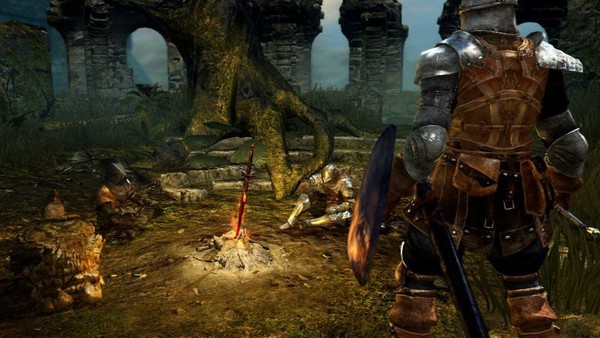9 Lessons All Video Game Developers Can Learn From Dark Souls
5. Bridging Story And Gameplay

When you look at games, they exist in two separate states. You have the gameplay state, where you shoot and stab and do all that fun stuff that requires a degree of player interaction. Then you have the story state, that tells the story through cut-scenes or separate voids in the world space where the player has little interactivity.
While that system works, and could be argued as the better system, Dark Souls takes steps in pushing the level of player immersion by bridging those two states of gameplay and story into one. The story, however minimalistic, is given to the player in a world that doesn’t cease to exist. The world and the player are never taken out of the game to present the narrative, and the player is free to do whatever they want gameplay-wise during these sections.
Enemies still function and the world continues around the player instead of securing them to safely tell them the story. The game-play and the story are the same with information given to the player through mediums that don’t stop the action. Through world design and the very few characters you talk to in the world. The game rarely forces you through a cutscene, and when it does, it’s to enforce integral points that FromSoft can’t reliably let the player discover themselves.
Most importantly, the game bridges the gap by making the story a key factor into the gameplay. The story is about 'hollowing' and 'going hollow'; a mechanic that is in itself, built into the game. By making the story and gameplay one and the same, the degree of player involvement is increased tenfold as they live the story simply by playing the game and experiencing the mechanics.